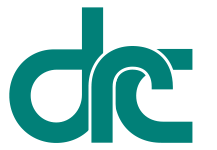DRC and DREDF Guidance for Health Care Facilities

DRC and DREDF Guidance for Health Care Facilities


The California Department of Public Health (CDPH) has issued the following guidance regarding visitation for patients with disabilities during the COVID-19 Public Health Emergency


DRC and DREDF Guidance for Health Care Facilities
Visitation in Hospitals and Other Facilities for Patients with Disabilities During the COVID-19 Public Health Emergency
The California Department of Public Health (CDPH) has issued the following guidance regarding visitation for patients with disabilities during the COVID-19 Public Health Emergency:
- Hospitals: All Facilities Letter 21-31 (August 12, 2021)
- Intermediate Care Facilities: All Facilities Letter 21-14.1 (August 12, 2021)
- Skilled Nursing Facilities: All Facilities Letter 22-07 (February 7, 2022)
- There is also a State Public Health Officer Order discussing vaccination and testing requirements in facilities: Order (February 7, 2022)
This document summarizes this guidance, and provides important information on safeguarding the rights and well-being of people with disabilities.
Summary of Guidance
The CDPH guidance provides important information regarding visitation for patients with disabilities who wish to be accompanied by a support person. The guidance also addresses visitation for pediatric patients, patients in labor and delivery, and patients at end-of-life.
For patients with disabilities in hospitals, the CDPH guidance recommends “up to two visitors or support persons not necessarily from the same household at the same time, provided physical distancing can be accomplished….”
Visitors do not need to be designated in advance by the patient, but should be screened for COVID-19 symptoms, wear a well-fitting face mask and other personal protective equipment (PPE), and must physically distance from staff and other patients and visitors.
Further, visitors must show proof of vaccination for COVID-19 or a negative COVID-19 test. Proof of vaccination may include a photo of an individual’s Vaccination Record Card or other proof from a health care provider. If a visitor is not vaccinated for COVID-19, or it has been less than two weeks since the visitor received all doses of a vaccine (2 doses for Pfizer-BioNTech and Moderna, 1 dose for Johnson and Johnson), they must show proof of a negative COVID-19 test. The negative COVID-19 test must be taken within one day of visitation for antigen tests or two days of visitation for PCR tests. Unvaccinated or incompletely vaccinated visitors with a history of COVID-19 within the prior 90 days may also provide documentation of recovery from COVID-19 in lieu of testing.
Visitors may be exempted from the vaccine and testing requirements in an urgent situation if they are a support person for a patient with a disability, but will still need to provide this proof as soon as possible.
Nursing homes and other facilities must permit indoor in-room visitation, subject to the same vaccine and testing requirements. Both the visitor and resident must wear a well-fitting face mask and appropriate PPE, and residents who share a room should conduct visits in a separate indoor space or when the roommate is not present. Facilities must also allow outdoor visitation options for all residents, regardless of vaccination status. If a resident is not able to leave their room or otherwise meet with visitors outdoors, the visitation may take place in the resident’s room, even for visitors who cannot provide vaccine verification or a negative test; however, these visits cannot take place in common areas, or when a roommate is present.
Finally, facilities are encouraged to maximize visitation opportunities by offering alternative means of communication, including virtual communication (phone, video-communication, etc.), assigning staff as a primary contact for families, and conducting regular outbound calls to keep families up to date.
Safeguarding the Rights and Well-Being of People with Disabilities
While public health and safety concerns are paramount during these difficult times, every California health facility should have a policy that ensures that patients with disabilities have in-person support when necessary to the provision of equal access to health care. A thoughtful policy on this important issue, consistent with our comments below, will enhance the safety and well-being of patients with disabilities and support the work of health care staff.
1. Protection of All People with Disabilities
Federal and State law prohibit discrimination on the basis of any disability, and requires that health facilities provide all people with disabilities with reasonable modifications to ensure equal access. The Americans with Disabilities Act (ADA), Section 504 of the Rehabilitation Act (Rehab Act), Section 1557 of the Affordable Care Act (ACA), and California disability law remain in full effect during this public health emergency.1 The California Department of Fair Employment and Housing (DFEH) affirmed this in guidance issued on the application of civil rights laws in healthcare settings during the COVID-19 pandemic.2
Further, in June 2020, the U.S. Department of Health and Human Services, Office of Civil Rights, reached an agreement with the State of Connecticut to ensure that people with disabilities have access to support persons in a hospital setting in a manner that is consistent with disability rights laws and the health and safety of patients, health care providers, and support persons. In February 2021, a similar agreement was reached with a hospital system in Maryland, Washington, D.C., and Virginia.3
The CDPH guidance mentions patients with “physical, intellectual, and/or developmental disabilities and patients with cognitive impairments.” Consistent with federal and state disability law, each health facility’s visitation policy should allow support persons for all persons with disabilities (also including hearing, seeing, other sensory, cognitive, speaking, psychiatric disabilities, etc.) who require such an accommodation, rather than limiting visitation to the categories of people with disabilities specifically mentioned in the CDPH Letter.
2. Reasonable accommodations to ensure that people with disabilities have equal access to care.
Hospitals and other health facilities should grant requests for a patient with a disability to be accompanied by a support person where necessary to ensure equal access to the services and care provided at the facility.
A “support person” includes anyone who can assist a patient with a disability to meaningful access and benefit from the services and care provided at the health facility. They may assist with communication, mobility, accessibility, emotional support, personal care, and other activities of daily living. They may be a paid personal care attendant, family member, partner, or other less formal caregiver.
Where a support person’s assistance helps to facilitate meaningful access to health care and other services to a patient with disabilities, that should be sufficient to establish the medical “necessity” of their presence under CDPH’s guidance.
For example, a patient with disability-related communication barriers may require the in-person support of a trusted person to facilitate effective communication with health care staff. Likewise, a patient with a disability that affects their ability to understand or follow medical guidance may need a trusted support person to assist them.
3. PPE and Precautions for Visitors
The CDPH guidance confirms that all visitors, including support people, may be required to follow facility rules regarding essential precautions such as the use of personal protective equipment (PPE).
Visitors should be encouraged to bring their own mask or other PPE. If they do not have their own, or a facility requires the use of certain kinds of PPE, the facility should provide visitors with PPE at the visitor check-in area, as well as any needed training or assistance with PPE use.
4. Video and Phone Call Communications
As described in the CDPH guidance, patients benefit from video and phone calls with loved ones, caregivers, and other support persons who are not physically present.
For patients with disabilities, the health facility should provide reasonable accommodations when necessary to facilitate meaningful access to these technologies. This may include: staff assistance in using a phone, tablet, or other personal device; using larger screens, integrated caption or sign-language interpretation, or other technologies that accommodate a patient’s disability needs; extra time using a device or wired equipment provided by the facility; or other modifications to procedures to ensure equal access.
5. Transparency of Policy and Rules on Visitation
Each health facility must effectively communicate with patients and the public about its visitation policy. Patients with disabilities and their families need to be informed about how to ask for in-person contact with a support person, as well as the rules for safe visiting.
Signage should be posted at the facility, in parking lots, and at all arrival points. The facility’s policies should be posted online and on social media, and in multiple modes that are accessible to people with disabilities and to people with limited English proficiency.
We are Here to Help
Our organizations are committed to ensuring the safety and well-being of people with disabilities during this public health emergency. We regularly provide technical assistance to service providers on issues like this one. Likewise, if you or someone you know face barriers to securing visitation consistent with the State’s recent guidance, please contact us.
Disability Rights California
Phone: 1-800-776-5746
Visit: https://www.disabilityrightsca.org
Disability Rights Education and Defense Fund
Phone: (510) 644-2555
Visit: https://dredf.org
Additional Information
Coronavirus (COVID-19) - Hospital Visitation for Patients with Disabilities
- 1. 42 U.S.C. §12132 (ADA Title II prohibition against discrimination in services, programs, and activities of a public entity); 42 U.S.C. §12182 (ADA Title III prohibition against discrimination in any place of public accommodation); 28 C.F.R. § 35.130 (regulations implementing ADA Title II); 28 C.F.R.§ 36.201 (regulations implementing ADA Title III); 29 U.S.C § 794 (Rehab Act prohibition against discrimination in a program or activity receiving Federal funds); 45 C.F.R. § 92 (ACA regulations); Cal. Gov’t Code § 11135; Cal. Civ. Code § 51 (Unruh Act); Cal. Civ. Code § 54 (Disabled Persons Act
- 2. California Department of Fair Employment and Housing, COVID-19 Resources and Guidance, Healthcare (April 29, 2021), https://www.dfeh.ca.gov/covid-19-resources-and-guidance/
- 3. U.S. Department of Health and Human Services, Office of Civil Rights (June 9, 2020), available at: https://www.hhs.gov/about/news/2020/06/09/ocr-resolves-complaints-after-state-connecticut-private-hospital-safeguard-rights-persons.html ; U.S. Department of Health and Human Services, Office of Civil Rights (February 25, 2021), available at https://www.hhs.gov/about/news/2021/02/25/ocr-resolves-threediscrimination-complaints-after-medstar-health-system.html




